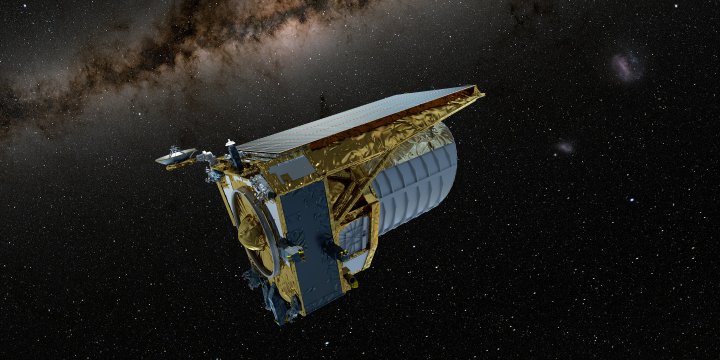If you thought it was annoying to deice your car in the winter, then spare a thought for the engineers whose job it is to deice telescopes in space. The European Space Agency’s (ESA) Euclid space telescope is currently undergoing a deicing procedure to remove a few layers of water ice that are less than a nanometer thick but enough to impede the telescope’s highly accurate measurements.

It’s not uncommon for ice to form on space telescopes, as small amounts of water get into the telescope from the air while they are constructed on Earth. When they are launched into space, this water is gradually released and freezes in the cold environment, forming a layer of ice. This isn’t often a big problem, but as Euclid is studying dark matter and dark energy, it needs to take extremely sensitive measurements, and the ice is getting in the way.
This sensitivity is why engineers can’t simply whack on Euclid’s heaters to melt the ice but rather have to approach the issue carefully.
“Most other space missions don’t have such demanding requirements on ‘thermo-optical stability’ as Euclid,” explained Andreas Rudolph, Euclid Flight Director at ESA’s mission control, in a statement. “To fulfill Euclid’s scientific goals of making a 3D map of the Universe by observing billions of galaxies out to 10 billion light-years, across more than a third of the sky, means we have to keep the mission incredibly stable – and that includes its temperature. Switching on the heaters in the payload module therefore needs to be done with extreme care.”
To tackle the issue, the team is finding out exactly where the ice is located and plotting how it will impact measurements in the future if it continues to accumulate. Then, they can try various approaches to heating, such as gradually increasing the temperature of the spacecraft as a whole or the more complex operation of heating up only certain parts of it.
By moving carefully now, the team hopes to be ready for the future as small amounts of water continue to be released and freeze.
“Once we have isolated the affected area, the hope is that we can then simply warm up this isolated part of the spacecraft in the future as needed,” said Mischa Schirmer, calibration scientist for the Euclid consortium, who is working on the plan for deicing. “What we are doing is very complex and fine-grained, so that we can save valuable time in the future – I’m extremely excited to find out just where this water ice is accumulating, and how well our plan will work.”



